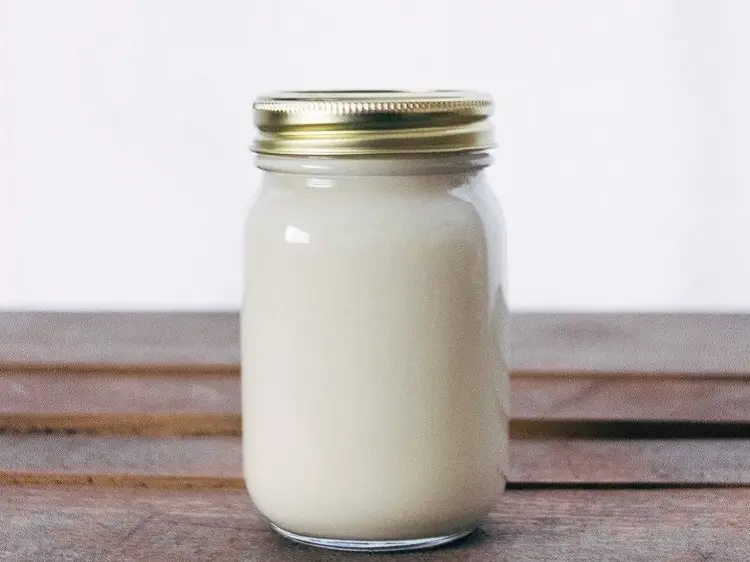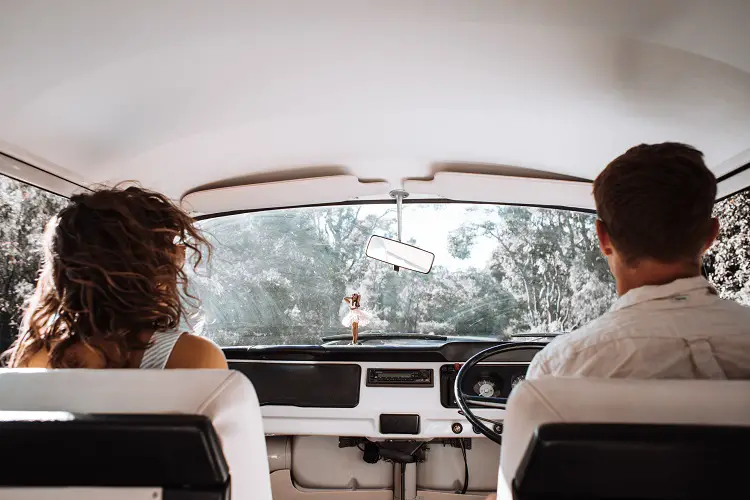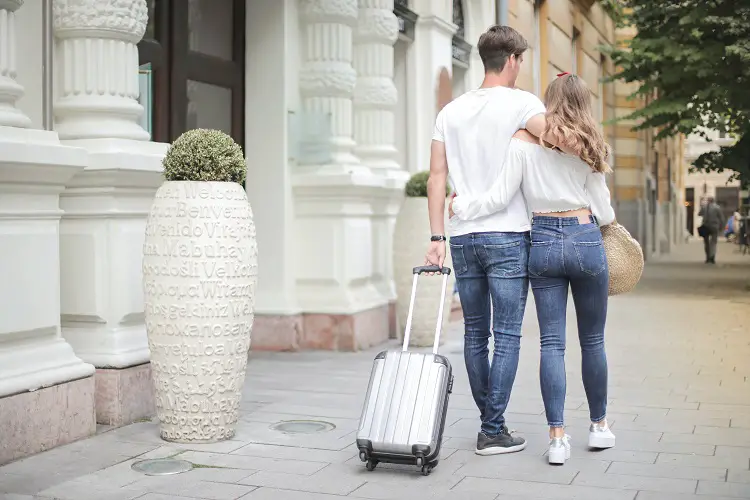Traveling as a lactating mother comes with its challenges. You worry about your luggage, you worry about your baby’s own.
There is concern about your baby’s feeding, and you may think aloud, “How do I travel with breast milk?” especially if you are a nursing mother who is on an exclusive breastfeeding plan.
Traveling involves using a medium of transportation, so whether you are driving or flying to your destination, you do not need to worry yourself over how to travel with breast as we will be serving you a complete guide on how to travel with breast milk.
Traveling With Fresh Breast Milk
If you want fresh breast milk, you must travel with a breast milk cooler, as most come with an ice pack.
On leaving the house, you have got to ensure that the ice pack is a frozen solid and make sure that when you’re getting your things ready for your journey, breast milk is the last thing you pack, and when you have arrived at your destination, also make sure that it is the first thing you unpack.
If there is a need for extra milk quantity that doesn’t get contained in the breast milk cooler, the breast milk can be packed with ice into a larger cooler during the trip.
To be double sure that your breast milk is kept frozen, you can monitor the temperature of your cooler using a thermometer.
Make sure that the cooler is kept close to avoid fluctuations of temperature, as the inflow of air when the cooler is opened can affect the temperature of the cooler and can also result in the breast milk getting thawed.
The main instruction when traveling with fresh breast milk is to ensure that it is kept frozen and maintained at a low temperature. If this instruction is followed, the fresh breast milk can last for 24 hours and more.
If you want to feed your baby with breast milk within an hour or two hours intervals, there is no need to chill in a cooler, but be sure that the temperature is not increasing because of sitting for too long outside a cooler or ice pack.
Traveling With Frozen Breast Milk

Keeping your frozen breast milk outside a cooler when traveling isn’t a bad idea, packing it in a cooler also is great, but you may want to use dry ice to help preserve the frosted nature of the milk by using dry ice inside the breast milk cooler.
No rule says that you must always use dry ice, but if you are uncomfortable traveling with dry ice, ensure the cooler is as full as possible.
If you don’t have enough milk to fill the cooler, consider freezing water in plastic zip-top bags and using that to ensure it is full. Having a full cooler makes it tighter and prevents heat inflow.
Also, remember that the cooler should be closed. Opening and closing will increase the temperature of the cooler and affect the breast milk.
If you have a smaller/soft cooler, consider pre-chilling before you leave so that the breast milk doesn’t thaw before you get to your destination.
Read Also: What To Do With An Old Breast Pump
How To Travel With Breast Milk By Airplane
Most airlines require lactating mothers to carry their breast pump with them as they are considered a medical device.
Different countries have different rules and regulations guiding them regarding the quantity of breast milk you can bring when you travel on an airplane.
The Amount of Breast Milk You Can You Take on an Airplane
United States
In the US, the TSA (Transportation Security Administration) is responsible for screening travelers and bags at the airport. Commonly, the TSA allows you to carry liquids in your carry-on baggage if they’re in containers that are 3.4 ounces (100 ml) or less, and all the containers fit into one transparent quart-sized zipper bag.
However, the liquid standard is somewhat different when it comes to taking care of infants and children. This is the classification that breast milk falls into.
Mothers flying either with or without their baby can bring breast milk in quantities greater than 3.4 ounces or 100 milliliters onto the plane in their portable carry-on as long as they inform the screener for it to be inspected at the checkpoint.
The TSA security screener will inspect your containers. They can also test all the liquids for explosives.
Although the security will examine your breast milk, they will not ask you or your baby to taste it.
Other Countries
You can likewise go on a plane with breast milk in your carry-on luggage in the United Kingdom.
Depending on the duration of your flight and your child’s age, you will need more than 100 milliliters and a quart-sized bag worth of containers.
That’s fine. You can bring what you need, but each bottle cannot hold more than 2000 milliliters. If your child is not with you, you may also take liquid breast milk in your potable carry-on bag.
However, if your breast milk is frozen, you must put it in your checked or hold the bag. These restrictions are similar to other European countries.
To avoid any confusion or issues at the airport while traveling, always check the screening process for the airports you will use before traveling.
Read Also: What Happens If Baby Drinks Spoiled Breast Milk
Traveling With Your Breast Milk Through the Airport Checkpoint
When traveling by air with your child or toddler, in the absence of suspicious activity or items, you can bring your breast milk through the airport security checkpoint if you perform the following:
- Separate your breast milk from other liquids, gels, and aerosols in your carry-on bag.
- Let the security staff at the checkpoint know you have breast milk you wish to bring onto the airplane.
- Once you get to the X-ray machine, ensure your breast milk is out and ready for additional inspection.
According to the U.S Food and Drug Administration (FDA), any food or medications that have been through the X-ray machine is not harmful.
If you’re in the United States, bottles of frozen milk may be examined simply by looking at them. Fresh, thawed, or slushy milk may be subject to additional examination.
At the checkpoint, an officer may ask you to open the container of breast milk and pour some out to test for explosives. Make sure the security officer puts on a clean pair of gloves if he or she must touch the breast milk bottles.
You can also let the officer know if you don’t want your breast milk to be opened or put through the X-ray machine. The TSA officers will have to clear the liquid, you, and your child through other screening methods.
Ensure you bring as much breast milk as possible for you throughout your journey in your carry-on. Avoid packing excessive bottles in your portable carry-on.
If you decide to pack your breast milk in a small cooler with ice packs or frozen gel freezer packs, bear in mind that frozen and partially frozen breast milk will also go through the screening process.
A small cooler for your breast milk should not count as an additional bag when traveling by air.
Additionally, concerning breast milk, you can pack baby food, juice, and infant formula in a carry-on or diaper bag while traveling. All of these things are subject to the same screening process.
Breast Milk in Your Checked Luggage
When packing your carry-on bag for travel, it’s best advised to bring the right amount of breast milk and formula that you will need throughout your flight and the amount of time you’ll spend at the airport before boarding.
It’s reasonable to take a little extra because planning for a delay is always wise. Notwithstanding, you probably do not need a week’s worth of breast milk for a day’s travel at the airport.
Therefore, any extra breast milk or formula can be packed in your checked baggage or hold luggage.
If you’re traveling outside the United States, it’s best advised to pack frozen breast milk in your hold luggage and examine them at the airport.
How To Travel With Breast Milk By Car

When traveling with breast milk using a car, it is necessary to maintain breast milk at a low temperature using either a mini-refrigerator or cooler to avoid an increase in the temperature or the breast milk thawing itself.
If you are considering the usage of a cooler, remember that they come in different sizes and can be soft-sided or hard-sided.
So whatever type of cooler you deem it fit to travel with, ensure that it serves the purpose of keeping the breast milk chilled or that it remains frozen until you take it back to the refrigerator on arrival at your destination or until there is a need for breastfeeding.
So you have to be sure you know how many hours or how long the cooler can keep your breast milk or other contents cold.
You must also have enough ice or ice packs during the journey inside the cooler to help keep the contents of the cooler cold.
You can also use a mini-refrigerator plugged into the car’s adapter to keep the breast milk cold all day.
This saves the stress of carrying coolers around but remember it all boils down to choice.
Feeding Your Baby during a Trip
On the road to your destination, there are high chances of your baby getting hungry and needing the pleasure derived from feeding, and obviously, you can’t feed your baby with frozen breast milk.
Because of the chances of breastfeeding while en route to your destination, it is recommended that you have a bottle of unfrozen breast milk readily available in a bag or a small cooler, perhaps by your side, so that it is readily available.
Pumping On the Trip
One must remember a few things when it comes to pumping on your trip.
If your pump is not rechargeable, you need either a car adapter or a battery pack. Just make sure you buy one with the correct voltage for your pump.
If you have to pump more than once, you’ll need to figure out a way to clean your pump parts. You have a few options
- Pack enough sets of clean pump parts and bottles that’ll be enough throughout your trip. Ensure each set including – flanges, valves, connectors, bottles, and caps is packed in a gallon-sized zip-top bag so you can just pull it out when you’re ready to pump.
- Get a collapsible wash basin, dish soap, bottle brush, and clean towels to wash your pump parts on after you use them. This method complies with the CDC guidelines for washing pump parts. However, if you’re on a plane, you can ask the flight attendant for bottled water to wash your pump parts. Washing your pump parts in the restrooms is not advisable because of bacteria contamination.
- If neither of these didn’t work, try using Medela Quick-Clean wipes.
Read Also: How To Wash Baby feeding bottles
Managing Your Milk At Your Destination
Of course, pumping in an environment where you don’t normally pump, without the comforts of your pumping station and set up for storing milk and washing pump parts, can be one of the most stressful things to think about when traveling with breast milk.
Here is what you need to remember, whether at the hotel or in your home.
Storing Your Breast Milk
Before traveling, make sure that there is a fridge that you can use at your destination.
If the plan is to stay in a hotel, call and ask ahead of time if a mini-fridge can be provided for your room, and tell them that you need it to store breast milk.
The hotel may provide this for you at no charge, as breast milk is sometimes considered a “medical liquid”. If you need a freezer, you can ask any of the staff at the hotel to see if you can use the hotel freezer.
Alternatively, you can call ahead and ask even if you’re staying at the hotel or as a guest in someone’s home. Make sure your milk is well sealed and labeled into a single container.
Related Posts:
- How To Plan a Vacation with a Toddler
- Are Strollers Allowed in Disneyland? Explained
- What To Do With Leftover Breast Milk (19 Useful Ideas)
Wind Up
We hope this article has provided you with indebt knowledge on how to travel with breast milk.
Just make sure that if you’re using an ice pack for the trip, you freeze it solid before you leave to keep your milk cold and avoid extra inspection from the TSA at the airport.
You could ask for ice at a restaurant after going through security if you’re traveling by air.
If you’re traveling by road, have a mini-refrigerator that can be plugged into the car’s adapter, or make sure the hotel you wish to stay has a mini-fridge with a small freezer compartment to help keep your milk cold.
If you have any other tips on how to travel with breast milk? Be kind to share your knowledge with us.
